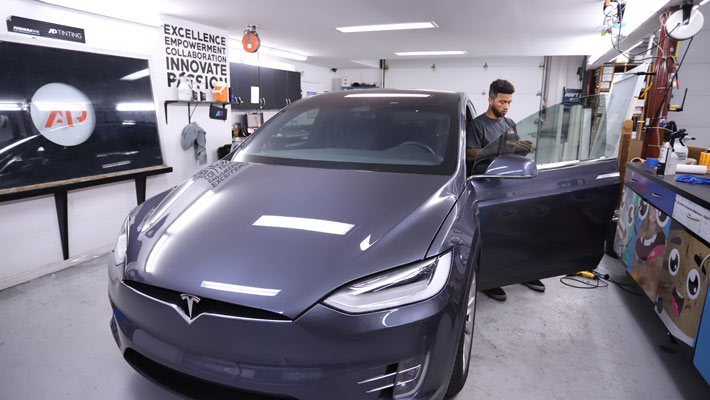The Difference Between Carbon and Ceramic Window Tint
Are you researching different window tints? Then you’ve come to the right place. Window tinting film is made using a variety of different materials, each with its own pros and cons. Here, we will help to explain the difference between ceramic window tint and carbon window tint.
What are the Different Types of Window Tint Films?
Of all the different types of window films available, they typically boil down to the following types. We’ve quickly defined the main differences between these window film materials as well as give you an idea of a “good, better, best” type situation.
- Dyed Window Tint (Good) – Most economical window tint film. Dyed window tint blocks light rays and absorbs some heat. Ideal solution for those who just want privacy but aren’t concerned about UV light or infrared light rejection.
- Metalized Window Tint (Better) – Reflects heat using metallic particles in the film. A step up from dyed film, it looks a tad shiny from the outside. The major downside to metalized window film is it can interfere with cell phone and GPS signals.
- Carbon Window Tint (Better) – A step up from metalized window films, carbon window tint uses carbon particle mixed into the film. This window tint rejects more heat than metalized, without cell signal interference, and it provides a unique matte look.
- Ceramic Window Tint (Best) – The best results from a window film. Ceramic films use ceramic particles to reject heat, sun glare, and UV rays. This film offers the highest levels of all categories while never sacrificing visibility.
Want ceramic window tint for your vehicle? You can schedule an appointment—online—right now. Just click the link below!
What Makes Ceramic Window Tint the Best?
Ceramic window tint films are the newest technology on the market. They are made using nano-ceramic technology which is nonconductive to heat and nonmetallic (no cell phone signal interference). The material itself simply outperforms all other films in laboratory studies in the areas of UV light rejection, infrared light rejection, sun glare reduction, and visibility. In addition, it adds structural stability to the window making the window more shatter-proof.
Should I Use Carbon or Ceramic Window Tint on My Vehicle?
This answer boils down to your preferences. If you want to save money while also getting good levels of heat rejection, a carbon or metalized window tinting film will be fine. That said, the cost difference is minimal—a couple hundred bucks. So even though a ceramic window film costs a little extra, the benefits in terms of heat rejection, UV ray protection, and sun glare reduction are massive.

These Same Concepts Stand for Your Home or Office Windows!
Did you know these same window films work on your home or office? When most folks think about window tinting, they envision their vehicles. But the truth is, if you’re someone who wants to tint your vehicle, why wouldn’t you also consider tinting your home? It offers the same benefits as above! This means protection from harmful UV rays, a reduced energy bill, and protection from color fading on your furniture and floors.
For more information on window tinting film, get in touch with AP Tinting today! Here at AP Tinting we are the nation’s leading provider of solar window film. We have access to the industry’s best brands and can help you decide upon the best type of window film to fit your goals and your budget.
